| 1. To create a Venetian mask , we start with a model sculpted out of clay. In some ways, this is the most creative part of the process. It can take anywhere from a few hours to several weeks. |
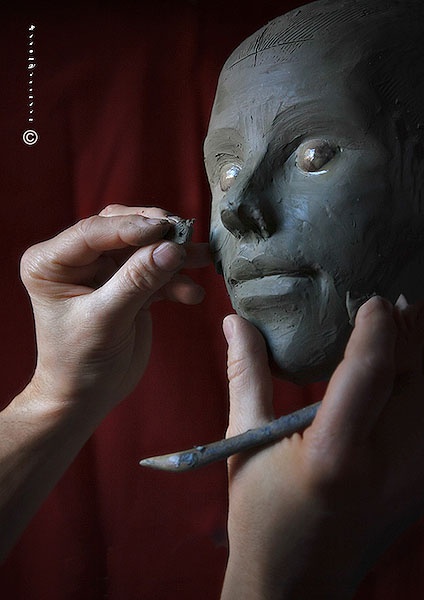 |
2. Next we pour plaster on top of our clay sculpture. The plaster is mixed with water, so it will be runny at first, but will harden as it sets. |
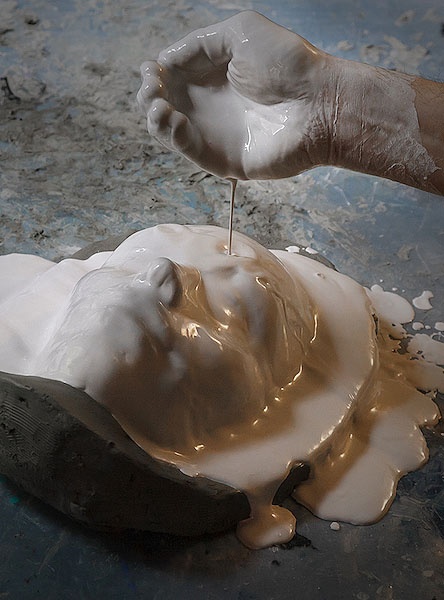 |
| 3. After about 90 minutes, the plaster has completely hardened. We now have what we need for the mold, which records in reverse the shape of the original clay sculpture. |
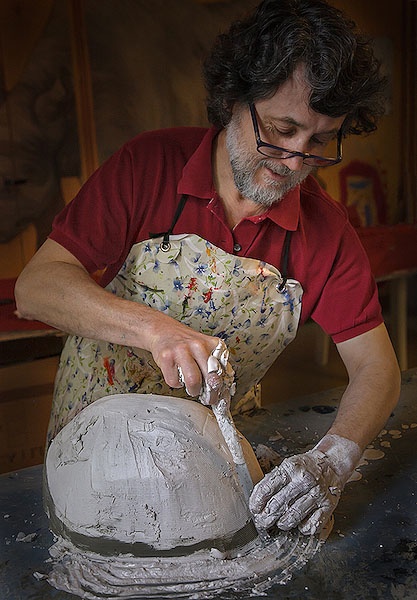 |
4. Now we have to free the mold from the clay sculpture, which unfortunately must be broken up into pieces for this to happen. |
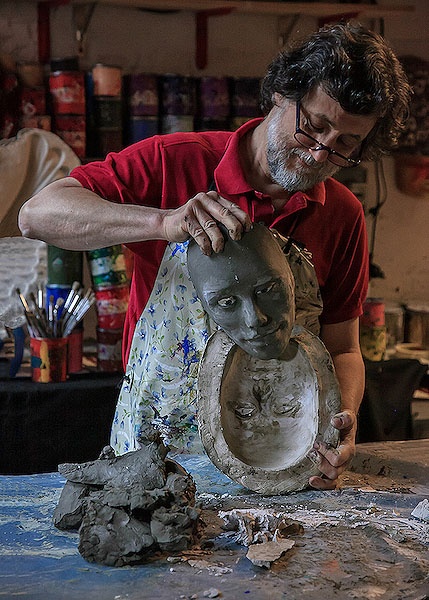 |
| 5. We coat the mold with vaseline, an excellent release agent, and fill the mold with several layers of thin paper cut into pieces and soaked in water and glue. The paper is a special absorbent paper called 'cartalana' (woolpaper) which does not shrink when it dries and keeps the shape imprinted by the mold. |
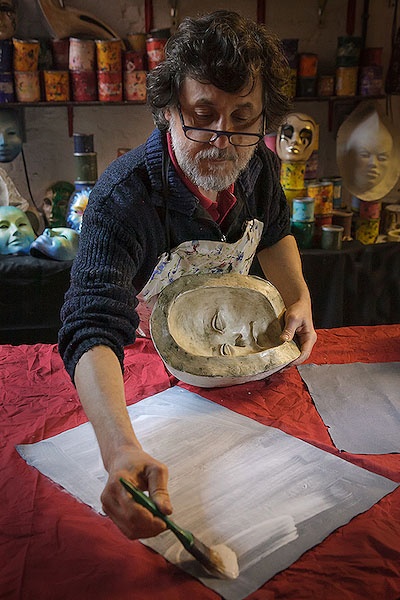 |
6. We cover the entire surface of the mold with many layers of paper (at least three). Fingers are really the only tools you can use for this job, especially if the model is complex. We put the mold on a heat source until the mask is dry and can be extracted. |
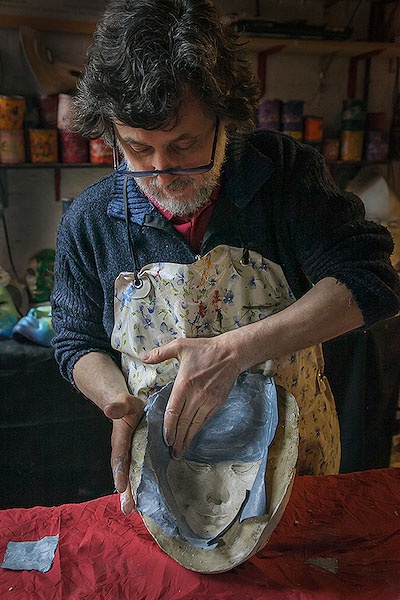 |
| 7. When the layers are completely dried out, (it can take up to 24 hours for a full-sized mask!) they will have blended together, merging into a single piece of material, which is flexible, light and breathes. At this point we can extract the pristine, pure mask from the mold. |
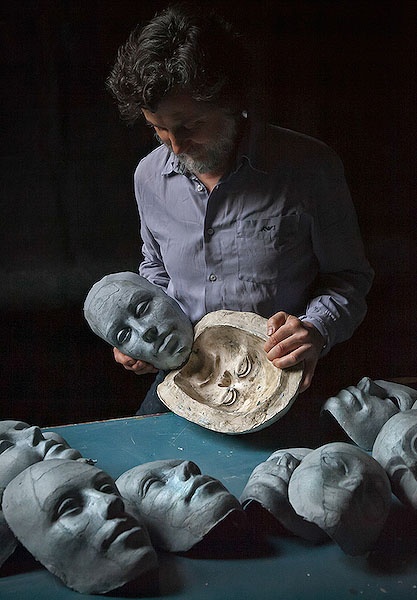 |
8. If everything has been done properly, the mask will already be smooth and there will be no need to cover its surface with stucco, used to stiffen it. Moving from the basic principles of how to make Venetian masks to actual practice requires a lot of trial and error. Each step can involve a lot of complicated work. |
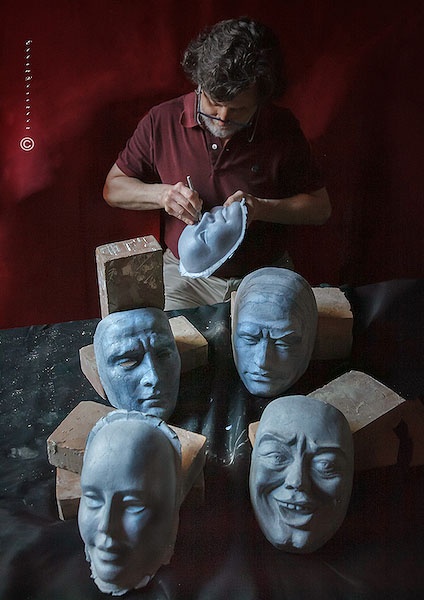 |
| 9. Now we can open the eyes of the raw mask and prepare it for decoration by different hands using white acrylic paint. |
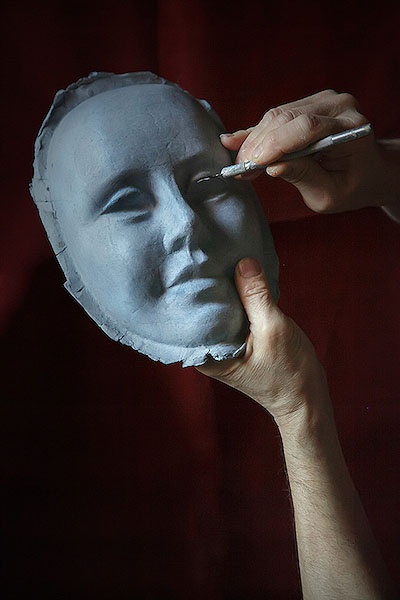 |
10. Decoration can be done with any kind of paint and any materials. Like the creation of the original sculpture, there are no limits placed on the creativity of the artist. |
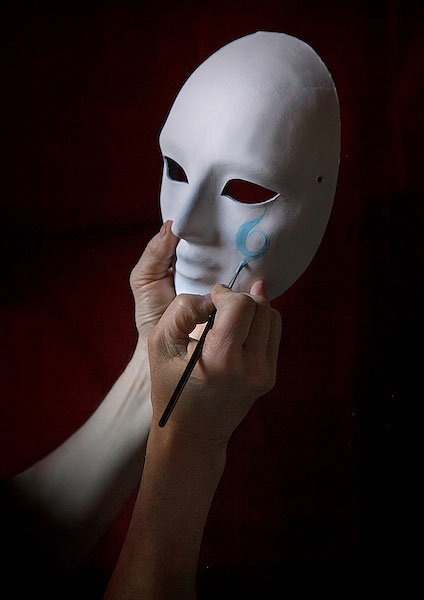 |
| This is the brightest part of our job: making your own Venetian mask provides a great way to express an idea, an emotion, anything we want, in the freest way possible. This is how Venetian masks are made at Ca' Macana, how to make Venetian masks the true traditional way. The result is a light, flexible mask that adapts to the face without breaking. If you would also like to learn how to make Venetian masks in a hands-on way, make your own mask in one of our excellent courses. |
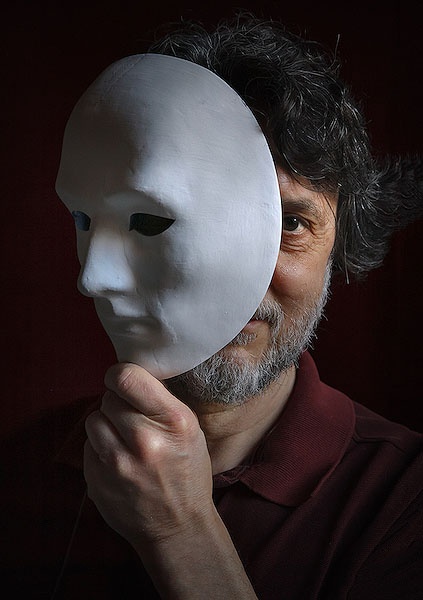 |